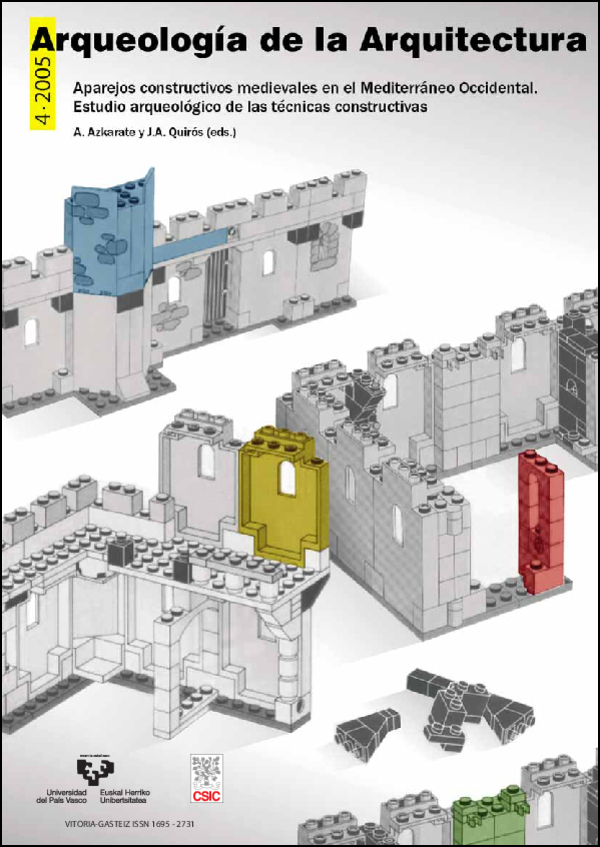Una aproximación a las técnicas constructivas de la Alta Edad Media en la Península Ibérica. Entre visigodos y omeyas
DOI:
https://doi.org/10.3989/arq.arqt.2005.82Keywords:
Construction techniques, Hispanic architecture, late antiquity, early medieval, wood, stone, ceramic building material, scaffolding, masonry, 8th-11th centuriesAbstract
The study of early medieval architecture of the Iberian Peninsula is in a state of change and renewal, thanks to the application of archaeological methods.
In particular, stratigraphy provides a way of analysing construction techniques, giving these new value as a potential means of distinguishing between different groups of buildings. Thus stratigraphy has become one of the keys to understanding the characteristics of, and the differents between, early medieval architecture and the architecture of late antiquity.
Downloads
Downloads
Published
How to Cite
Issue
Section
License
Copyright (c) 2005 Consejo Superior de Investigaciones Científicas (CSIC) - Universidad del País Vasco/Euskal Herriko Unibertsitatea (UPV/EHU)

This work is licensed under a Creative Commons Attribution 4.0 International License.
© CSIC. © UPV/EHU. Manuscripts published in both the print and online versions of this journal are the property of Consejo Superior de Investigaciones Científicas and Universidad del País Vasco/Euskal Herriko Unibertsitatea, and quoting this source is a requirement for any partial or full reproduction.
All contents of this electronic edition, except where otherwise noted, are distributed under a Creative Commons Attribution 4.0 International (CC BY 4.0) licence. You may read the basic information and the legal text of the licence. The indication of the CC BY 4.0 licence must be expressly stated in this way when necessary.
Self-archiving in repositories, personal webpages or similar, of any version other than the final version of the work produced by the publisher, is not allowed.















